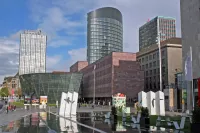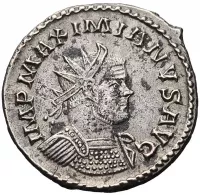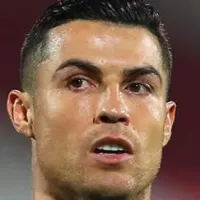The UEFA Europa League (UEL) is an annual football club competition organized by UEFA since 1971. Serving as the second-tier competition in European club football, it ranks below the Champions League and above the Conference League. The tournament features eligible European football clubs vying for the title.
1997: UEFA Cup finals were played over two legs until 1997
Until 1997, the UEFA Cup finals were played over two legs. In 1998, the one-match finals in pre-selected venues were introduced.
1998: Introduction of One-Match Finals
In 1998, the UEFA Cup introduced one-match finals held at pre-selected venues. Venues must meet UEFA Category three standards or higher.
2002: Feyenoord Wins at Home
In 2002, Feyenoord defeated Borussia Dortmund at De Kuip, Rotterdam, marking one of two occasions when the final was played at a finalist's home ground.
2005: Sporting CP Loses at Home
In 2005, Sporting CP lost to CSKA Moscow at their home stadium, Estádio José Alvalade in Lisbon, being the second occasion where the final was played at a finalist's home ground.
2009: Rebranding to UEFA Europa League
In 2009, the competition was rebranded as the UEFA Europa League to enhance its profile. The group stage was expanded to include eight more teams, forming 12 groups of four teams each playing in a double round-robin format. The top two teams from each group advanced to the knockout stage, which largely mirrored the previous format, with a single final match held at a neutral venue meeting UEFA's Category Four stadium criteria.
2012: Qualification round changes
In 2012, every team except for the title-holder and the highest-ranked from the top six associations had to play at least one qualification round.
2014: Distribution Changed to Broaden Appeal
In 2014, the distribution was changed to broaden the competition's appeal. The Europa League champions were given a Champions League qualification berth. More teams automatically qualified for the group stage.
2014: Title-holder qualification
Until 2014, the title-holder of UEFA Europa League was automatically qualified for the competition. Also, the highest-ranked (the cup winner or the best Europa League-qualified) from the top associations had to play at least one qualification round.
2015: LED Hoardings in Round of 16
In 2015, LED hoardings appeared in the UEFA Europa League from the round of 16. Since the same season, teams are not allowed to show their own sponsors from the group stage onwards.
2015: Qualification Changes
In 2015, changes to qualification for the UEFA Europa League were implemented. Associations ranked 7-9 in the UEFA coefficients sent the cup winners and two other teams to the UEFA Europa League qualification.
2015: New rules effective
In 2015, rules became effective that ensured the cup runner-up is no longer qualified through the cup berth.
2016: Introduction of UEFA Europa League Player of the Season Award
Starting from the 2016-17 edition, UEFA introduced the UEFA Europa League Player of the Season award to recognize outstanding individual performance.
2018: Changes to Qualifying Rounds
Beginning with the 2018-19 tournament, all domestic champions eliminated in the qualifying rounds of the UEFA Champions League will transfer to the Europa League. Europa League qualifying will also provide a separate champions route for these teams.
2018: LED Hoardings Expansion
In 2018, LED hoardings appeared for selected matches in the group stages and the round of 32 of UEFA Europa League.
2021: Europa League Prize Money
For the 2021-22 season, group stage participation in the Europa League awarded a base fee of €3,630,000. A group victory paid €630,000 and a draw €210,000. The winner earned €1,100,000 and the runner-up €550,000. Reaching the knock-out stage triggered additional bonuses, with the champions receiving €8,600,000.
2021: UEFA Europa Conference League Impact
In 2021, the announcement of the UEFA Europa Conference League, a tertiary competition, would serve to split off the lower-ranked teams in the Europa League to give them a greater chance to compete. The Europa League itself would have a greatly reduced format which will focus primarily around its group stage.
2021: UEFA Europa League Young Player of the Season Award
Starting from the 2021-22 edition, UEFA introduced the UEFA Europa League Young Player of the Season award, chosen by UEFA's Technical Observer Panel.
2024: Sponsorships for the 2024-27 Cycle
In 2024, the UEFA Europa League shares the same partners as the UEFA Conference League. The tournament's main sponsors for the 2024–27 cycle are multinational corporations.
2024: Kipsta Official Match Ball Supplier
Starting in 2024, Decathlon's Kipsta sub-brand will be the official match ball supplier for the UEFA Europa League for a three-year period.
Mentioned in this timeline
Ukraine is a large country in Eastern Europe second in...
Germany officially the Federal Republic of Germany is a Western...

Tottenham is a district in north London part of the...
Spain officially the Kingdom of Spain is located in Southern...

Dortmund Germany's ninth-largest city is a major urban center located...
The UEFA Champions League UCL is an annual club football...
Trending

2 months ago Gwyneth Paltrow on Timothée Chalamet and Kylie Jenner's Relationship: 'Punk Rock'

Lisa Rinna is an American actress television personality and model known for her roles on soap operas like Days of...
8 months ago Barcelona and Real Madrid to Clash in Copa del Rey Final El Clasico.

5 months ago Student Loan Repayment Troubles: 460K Denied, Backlog Alarms, Forgiveness Halted.

Amy Winehouse - was a highly acclaimed English singer and songwriter celebrated for her distinctive contralto voice and genre-bending music...

8 months ago Dyson Daniels Wins 2024-25 NBA Most Improved Player; Zubac, Cunningham Runners-Up
Popular

Candace Owens is an American conservative political commentator and author...

Ilhan Omar is an American politician currently serving as the...

XXXTentacion born Jahseh Dwayne Ricardo Onfroy was a controversial yet...

Frederick Christ Trump Sr - was an American real estate...

Charles James Charlie Kirk was a prominent American right-wing political...

Cristiano Ronaldo often nicknamed CR is a Portuguese professional footballer...